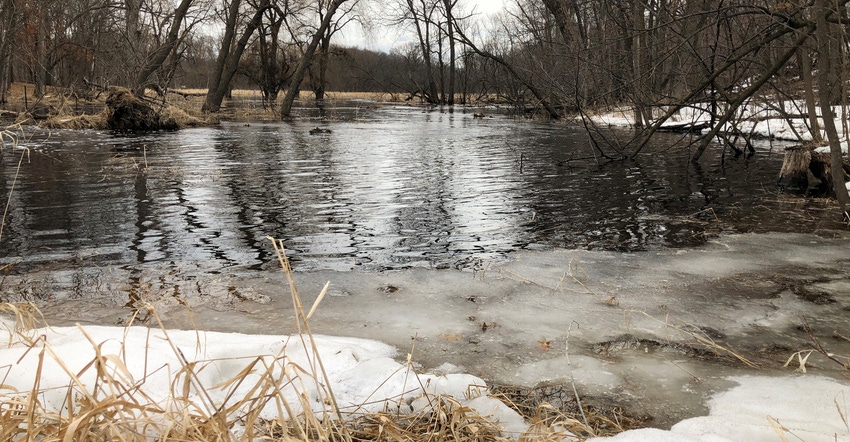March 16, 2022

Spring is right around the corner and with it, melting snow and soon-to-be warming soils.
Livestock farmers are patiently waiting for the right conditions to begin hauling manure to fields. One way to determine that is the Minnesota Runoff Risk Advisory Forecast (RRAF) system. This online tool is designed to help farmers and commercial applicators determine the best time to apply manure. Precipitation, snowmelt or other conditions can cause recently applied manure to move off target. The movement can decrease productivity and increase the risk of impairing local bodies of water.
The model considers soil moisture content, forecast precipitation and temperatures, snow accumulation and melt to predict the likelihood of daily, next-day and 72-hour runoff events. The information is used to create an interactive map that farmers can use to locate their fields and find the forecast risk.
The forecast runoff risk is grouped into four categories: No runoff expected, low, moderate and severe. When the risk is moderate or severe, it is recommended that the applicator evaluate the situation to determine if there are other locations or later dates when the application could take place. There may be additional things to consider when assessing the runoff risk for a field.
What to do if there’s high runoff risk
At this runoff risk assessment link, you will also be able to access recommendations about what to do if you must haul manure during high runoff risk times. They include:
identifying lower-risk fields for spreading or stacking manure
applying to your driest fields
avoiding sensitive areas of your fields. For information on what options you have, see the MPCA Manure Management Plan.
using your manure management plan or nutrient management plan to find fields with low slope, low erosion and low delivery potential (low phosphorus index)
applying to flatter fields without channelized flow, gullies
applying to fields farthest from surface water, conduits to groundwater and areas of concentrated flow
applying to fields that do not drain to nutrient-impaired water bodies
Collaborative effort
MDA, in partnership with the National Weather Service, developed the RRAF system. It is part of a regional Runoff Risk Advisory Forecast project. The goal of the projects is to reduce manure nutrient runoff. Wisconsin, Michigan, Minnesota and Ohio have partnered with several federal agencies and educational institutions to develop these decision support tools. The Minnesota project is funded with Clean Water Funds and is a collaboration of the Minnesota Department of Agriculture, the National Weather Service and other state agency and industry partners.
Access the online model at bit.ly/minnrraf.
Source: Minnesota Department of Agriculture, which is solely responsible for the information provided and is wholly owned by the source. Informa Business Media and all of its subsidiaries are not responsible for any of the content contained in this information asset.
You May Also Like




